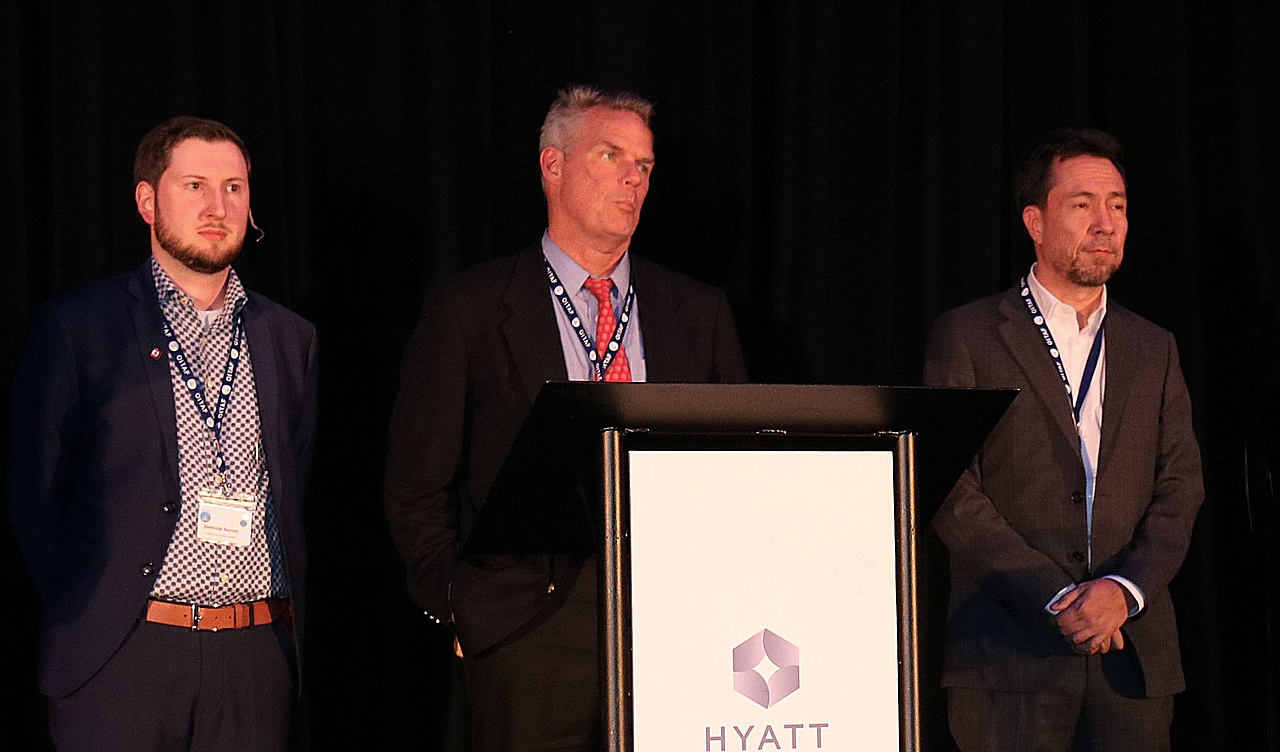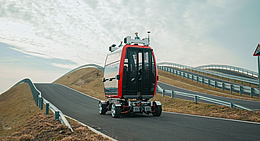The following summaries of the presentations are intended to provide an overview of the contents. For those who are interested in the full details, the presentation documents can be accessed on the OITAF website.
Get the best out of your ropes!
(Sven Winter)
The speaker presented the findings of OITAF Study Committee II (Ropes) and a report on a new rope testing device from the ROTEC company and the possibilities it offers for rope testing in the future. His presentation covered the following subjects in particular:
- Rope life calculations during the planning phase of a ropeway using the Feyrer method
- Increasing use in the future of permanent magnetic rope testing with live analysis
- Availability of new parameters such as lay length and localization (strand identification) of wire breaks
Doppelmayr’s digital customer training: know-how anywhere and anytime
(Philip Oberdorfer)
Proper training of ropeway operating personnel is crucial for safe passenger transportation and high system availability. Today, there are modern methods for training qualified personnel. Digitalization provides significant improvements compared with conventional training methods. The learning process is delivered via web-based training courses, where the combination of storytelling and media interaction can achieve high levels of user involvement and significant learning outcomes. An industry-wide solution also generates meaningful added value. For these reasons, the Doppelmayr Group has expanded its training portfolio for operating personnel by adding digital and cross-vendor modules.
O&M services – a successful long-term approach in managing clients’ assets
(Franziska Junginger)
When a local authority that has not previously operated a ropeway decides to build one, it faces the problem of a lack of expertise in terms of operation and maintenance, and the challenge of recruiting qualified personnel. It therefore makes sense for a new operator to buy in the relevant know-how. The idea is to create an organizational unit that is responsible for the following services on behalf of the ropeway operator:
- Monitoring the installation during normal operation and restoring operation in the event of a fault
- Planning and execution of maintenance work
- Training the personnel responsible for operation and maintenance
- Ensuring the safety of passengers and employees
For every ropeway installation sold and built, the Doppelmayr Group offers such a service under the name O&M Services (Operation and Maintenance), including the procurement and training of the necessary operating personnel.
Opportunities and threats of digitalization for the ropeway industry
(Marco Zgraggen)
Digitalization, often referred to as the fourth stage of industrialization (Industry 4.0), affects not only our personal environment but increasingly also the working world. This naturally includes the ropeway industry, and various digital tools are already in use for the operation and maintenance of ropeway facilities:
- System visualization and operation
- Operating data logs and records
- Work and safety instructions
- Maintenance documents
- Planning tools for operation, maintenance and business management
- Diagnostic systems, remote maintenance and remote control
- Visitor information and orientation
- Full mapping of the customer journey (i.e. the phases customers go through before purchasing a product).
Other digital tools relate to system networking, i.e. data exchanged across system and competence boundaries. Three major trends are evident in the digitalization of the ropeway industry today:
- Paperless documentation
- IoT applications (Internet of Things)
- AI applications




![[Translate to English:] Foto: Leitner](/fileadmin/_processed_/a/8/csm_Vertragsunterzeichnung_Narvik_6_copyright_LEITNER_print_501f2d5c24.jpg)


![[Translate to English:] (c) Doppelmayr](/fileadmin/_processed_/b/3/csm_85-ATW_Stechelberg-Muerren_Lauterbrunnen_CHE_001_6442c0520d.jpg)







